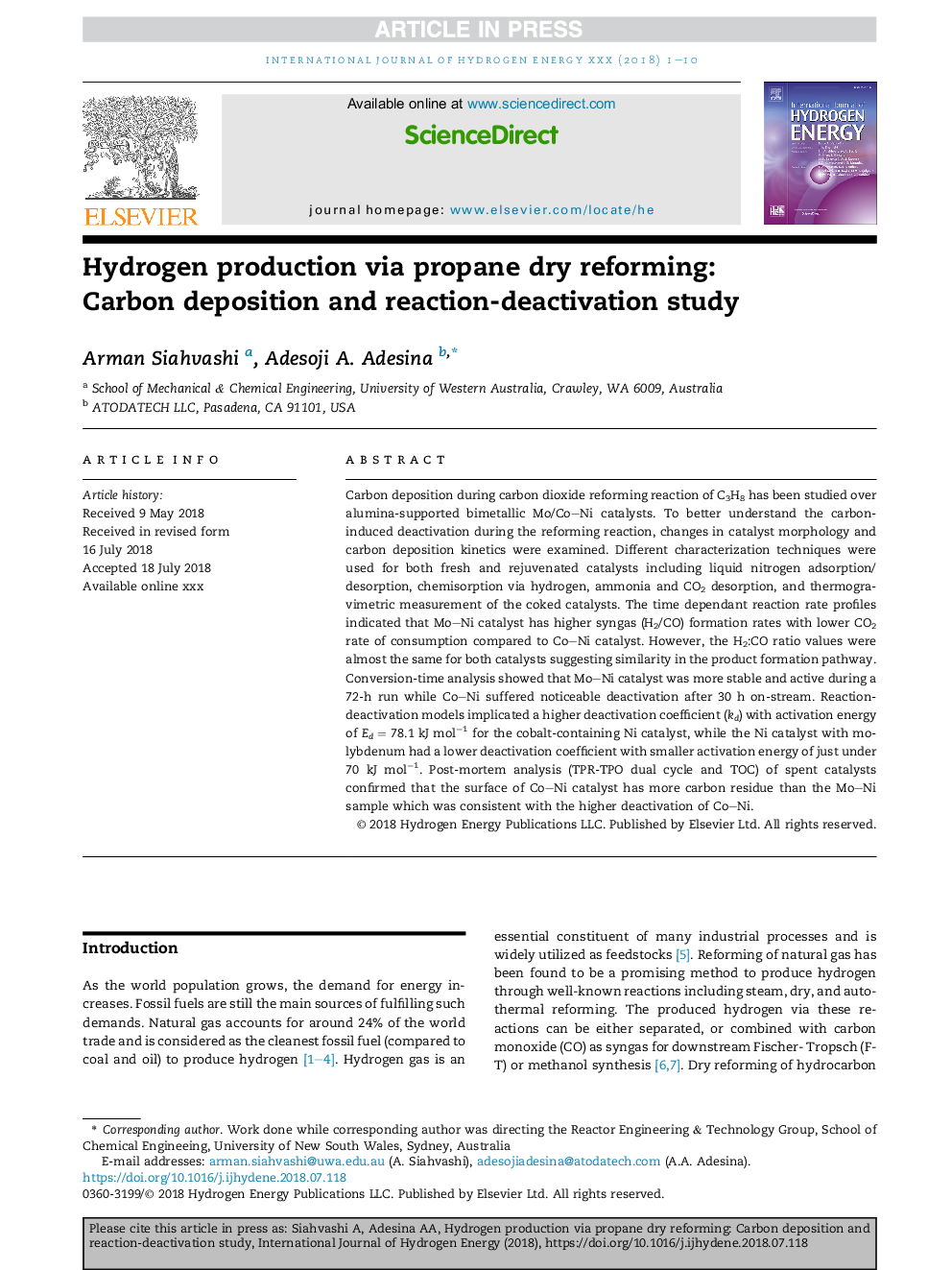| Article ID | Journal | Published Year | Pages | File Type |
|---|---|---|---|---|
| 8948255 | International Journal of Hydrogen Energy | 2018 | 10 Pages |
Abstract
Carbon deposition during carbon dioxide reforming reaction of C3H8 has been studied over alumina-supported bimetallic Mo/CoNi catalysts. To better understand the carbon-induced deactivation during the reforming reaction, changes in catalyst morphology and carbon deposition kinetics were examined. Different characterization techniques were used for both fresh and rejuvenated catalysts including liquid nitrogen adsorption/desorption, chemisorption via hydrogen, ammonia and CO2 desorption, and thermogravimetric measurement of the coked catalysts. The time dependant reaction rate profiles indicated that MoNi catalyst has higher syngas (H2/CO) formation rates with lower CO2 rate of consumption compared to CoNi catalyst. However, the H2:CO ratio values were almost the same for both catalysts suggesting similarity in the product formation pathway. Conversion-time analysis showed that MoNi catalyst was more stable and active during a 72-h run while CoNi suffered noticeable deactivation after 30 h on-stream. Reaction-deactivation models implicated a higher deactivation coefficient (kd) with activation energy of Ed = 78.1 kJ molâ1 for the cobalt-containing Ni catalyst, while the Ni catalyst with molybdenum had a lower deactivation coefficient with smaller activation energy of just under 70 kJ molâ1. Post-mortem analysis (TPR-TPO dual cycle and TOC) of spent catalysts confirmed that the surface of CoNi catalyst has more carbon residue than the MoNi sample which was consistent with the higher deactivation of CoNi.
Related Topics
Physical Sciences and Engineering
Chemistry
Electrochemistry
Authors
Arman Siahvashi, Adesoji A. Adesina,
